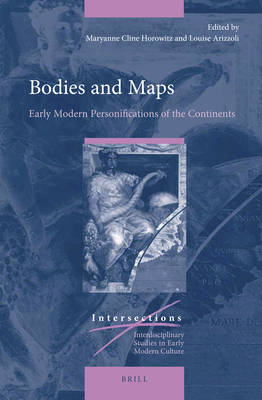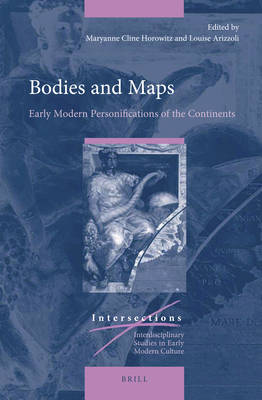
- Afhalen na 1 uur in een winkel met voorraad
- Gratis thuislevering in België vanaf € 30
- Ruim aanbod met 7 miljoen producten
- Afhalen na 1 uur in een winkel met voorraad
- Gratis thuislevering in België vanaf € 30
- Ruim aanbod met 7 miljoen producten
Zoeken
Bodies and Maps
Early Modern Personifications of the Continents
€ 273,95
+ 547 punten
Omschrijving
Since antiquity, artists have visualized the known world through the female (sometimes male) body. In the age of exploration, America was added to figures of Europe, Asia, and Africa who would come to inhabit the borders of geographical visual imagery. In the abundance of personifications in print, painting, ceramics, tapestry, and sculpture, do portrayals vary between hierarchy and global human dignity? Are we witnessing the emergence of ethnography or of racism? Yet, as this volume shows, depictions of bodies as places betray the complexity of human claims and desires. Bodies and Maps: Early Modern Personifications of the Continents opens up questions about early modern politics, travel literature, sexualities, gender, processes of making, and the mobility of forms and motifs.
Contributors are: Louise Arizzoli, Elisa Daniele, Hilary Haakenson, Elizabeth Horodowich, Maryanne Cline Horowitz, Ann Rosalind Jones, Paul H. D. Kaplan, Marion Romberg, Mark Rosen, Benjamin Schmidt, Chet Van Duzer, Bronwen Wilson, and Michael Wintle.
Contributors are: Louise Arizzoli, Elisa Daniele, Hilary Haakenson, Elizabeth Horodowich, Maryanne Cline Horowitz, Ann Rosalind Jones, Paul H. D. Kaplan, Marion Romberg, Mark Rosen, Benjamin Schmidt, Chet Van Duzer, Bronwen Wilson, and Michael Wintle.
Specificaties
Betrokkenen
- Uitgeverij:
Inhoud
- Aantal bladzijden:
- 436
- Taal:
- Engels
- Reeks:
- Reeksnummer:
- nr. 73
Eigenschappen
- Productcode (EAN):
- 9789004387904
- Verschijningsdatum:
- 10/12/2020
- Uitvoering:
- Hardcover
- Formaat:
- Genaaid
- Afmetingen:
- 157 mm x 236 mm
- Gewicht:
- 1020 g

Alleen bij Standaard Boekhandel
+ 547 punten op je klantenkaart van Standaard Boekhandel
Beoordelingen
We publiceren alleen reviews die voldoen aan de voorwaarden voor reviews. Bekijk onze voorwaarden voor reviews.







